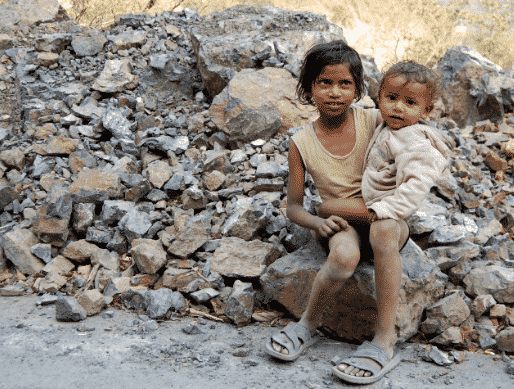Malnourishment–
- It is a condition that results from eating a diet in which nutrients are either not enough or are too much such that the diet causes health problems.
- It includes under nourishment, over nourishment, obesity and starvation.
- This is an age old concept that arises because of various historical, geographical, social, political circumstances and also results from excessive urbanization leading to overcrowding.
- In 2015,India became the largest country affected by malnourishment beating sub Saharan African countries.
Reasons:
Historical problems
1. Regular famine during British Era led to unavailability of proper nutritious food.
2. Degradation of agriculture and regional imbalances particularly in poverty and hunger in certain places of India.
Geographical problems
1. More than 50% of India’s agricultural land is under dry land agriculture, which results in reduced food productivity.
2. Diverse physiographic regions, over dependence on monsoon, consistent droughts, practice of mono-culture agriculture are other prominent reasons of malnourishment.
Social problems
1. Exclusion of women in all decision making, government schemes, food related schemes, etc.
2. Child marriage and early pregnancy makes the new-born child vulnerable to malnourishment.
3. Multiple pregnancies of women make their health conditions worse and due to poor economic condition they are not able to afford nutritious food for themselves as well as for their children.
4. Discrimination between boy and girl child from childhood days by providing more nutritious food to boys only.
5. Insufficient educational opportunities for women, especially after the age of sixteen years, they are made to drop out from schools and are married off.
6. Low iron and zinc content in food.
- The practice of breast feeding is poor in India, mother’s milk is the main source of protein and food for children in their early days.
- The Indian poor are often not able to afford expensive green leafy nutritious vegetables and fruits, this leads to malnourishment.
- The dominating caste system and increasing inequality has made 1% of Indian population own 90% of India’s resources.
- Poor data availability regarding the people vulnerable to malnourishment.
- High corruption and low transparency make the poor people more vulnerable to malnourishment.
- Increasing purchasing power and the growing fast food culture lead to over intake of transfats, making more and more children obese.
- The urban poor, mainly people residing in slums are not getting enough food.
STRATEGY TO CONTROL:
- Janani Shishu Suraksha Karyakram and Indira Gandhi Matritva Sahyog Yojana for availability of nutritious food to the mother and the new born child.
- Rashtriya Bal Swasthya Karyakram-it talks about the deficiency of nutrients and their fulfillment.
- Creating awareness about breast feeding. If infants are exclusively fed breast-milk in the first 6 months of their life- the lives of at least 1.2 million children would be saved every year.
- Food fortification-Where government makes the availability of food naturally rich in micro nutrients in the National Food Security Act.
- Proper and clean supply of drinking water to all rural people by filtering through Terracotta filters.
- Water kiosks-A person can get twenty liters of water by paying just Rs 2.
- Bio-digester toilets by DRDO-To solve the problem of open defecation and to improve the hygiene and health conditions of people.
- FSSAI(Food Safety and Standards Authority of India) guidelines-Mentioning of nutrient contents, transfat, sodium, health warning in all food products.
- Mainstreaming of Women, empowerment of youth, controlling food inflation are other significant steps to check malnourishment.











